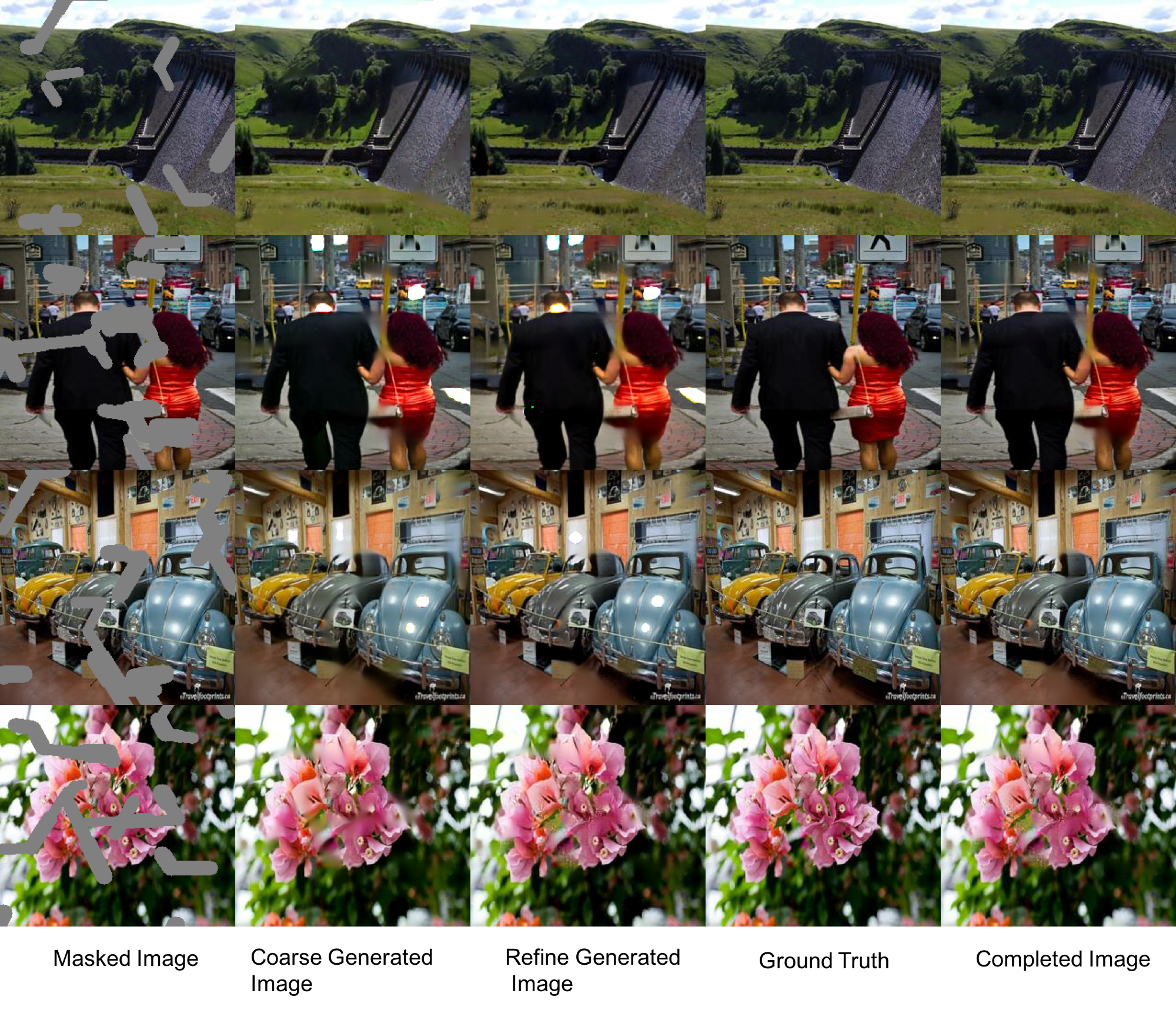A modified reimplemented in pytorch of inpainting model in Free-Form Image Inpainting with Gated Convolution [http://jiahuiyu.com/deepfill2/] This repo is transfered from the https://github.com/avalonstrel/GatedConvolution and https://github.com/JiahuiYu/generative_inpainting.
It is a model for image inpainting task. I implement the network structure and gated convolution in Free-Form Image Inpainting with Gated Convolution, but a little difference about the original structure described in Free-Form Image Inpainting with Gated Convolution.
- In refine network, I do not employ the contextual attention but a self-attention layer instead.
- I add batch norm to each layer.
BenchMark data and Mask data can be found in Google Drive

I provide a pre-trained Baidu, Google model on Places2 256x256 dataset, (but unfortunately only the coarse network can be loaded since I change the network structure after the pre-train process, in fact the coarse network also work).
Run bash scripts/test_inpaint.sh
You should provide a file containing file paths you want to test following the form of
test1.png
test2.png
... ...
Change the parameters in config/test_places2_sagan.yml About the image
places2:
[
'flist_file_for_train',
'flist_file_for_test'
]
About the mask
val:
[
'mask_flist_file_for_train',
'mask_flist_file_for_test'
]
The mask file should be a pkl file containing a numpy.array.
The MODEL_RESTORE should be set to the path of the pre-trained model. After successfully running, you can find the results in result_logs/MODEL_RESTORE
To train your own model with some other dataset you can
Run bash scripts/run_inpaint_sa.sh
By providing the
places2:
[
'flist_file_for_train',
'flist_file_for_test'
]
About the mask
val:
[
'mask_flist_file_for_train',
'mask_flist_file_for_test'
]
And in training you can use random free-form mask or random rectangular mask. I use random free-form mask. If you want use random rectangular mask you need to change the process in train_sagan.py(line 163) and set MASK_TYPES: ['random_bbox'].
Some detials about the training parameters is easy to understand as shown in config file.
Run tensorboard --logdir model_logs --port 6006 to view training progress.
We provide two random mask generation function.
-
random free form masks
The parameters about this function are
RANDOM_FF_SETTING:
img_shape: [256,256] mv: 5 ma: 4.0 ml: 40 mbw: 10Following the meaning in http://jiahuiyu.com/deepfill2/.
-
random rectangular masks
RANDOM_BBOX_SHAPE: [32, 32]
RANDOM_BBOX_MARGIN: [64, 64]
means the shape of the random bbox and the margin between the boarder. (The number of rectangulars can be set in inpaint_dataset.py random_bbox_number=5)
My project acknowledge the official code DeepFillv1 and SNGAN. Especially, thanks for the authors of this amazing algorithm.